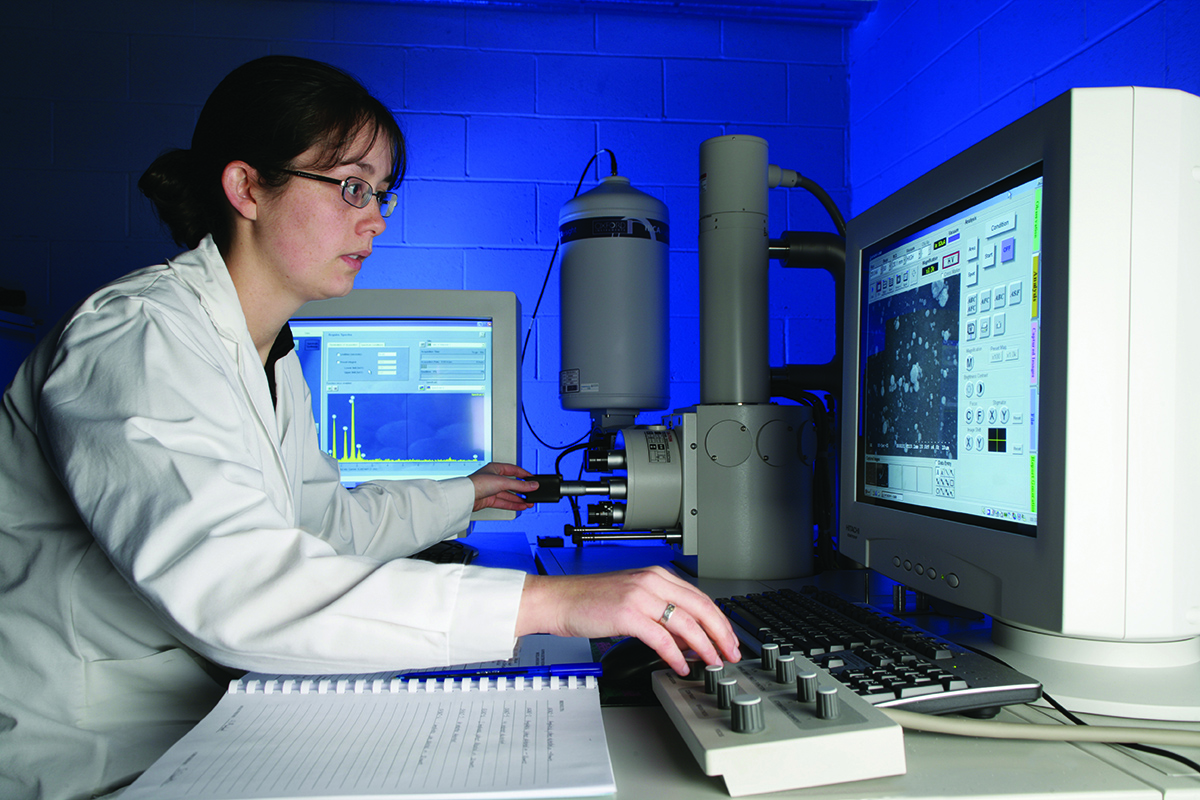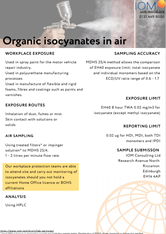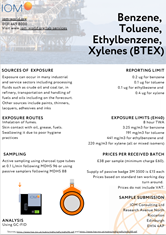- Home
- Science
- Our Work
- Air Pollution
- Agriculture, Farming and Pesticides
- Asthma and other Lung Diseases
- Coronavirus Pandemic (COVID-19)
- Exposure to Chemicals and Dust
- Exposure to Nanomaterials
- Human Exposure
- Neurodegenerative Diseases
- Musculoskeletal Disorders
- Occupational Cancer
- Sustainable Working
- Sustainability and Climate Change
- Stress, Wellbeing and Psychosocial Issues
- COVID-19 IOM Study of Face Coverings in Retail Environments
- Styrene Study
- PROTECT COVID-19 National Core Study
- Firefighters and Cancer – IOM Report
- MORtality Study of Former Professional Footballers in England and Wales (MORSE) Study
- Our Scientists
- Our Expertise
- Nano Material Services
- Development and Management of Data and Information Systems and Services
- Ergonomics Design and Evaluation
- Epidemiological Studies & Methods
- Exposure Assessment
- Health Impact Assessment (HIA) and Risk Assessment
- Policy Evaluations
- Study Design and Statistical Analysis
- Systematic Reviews and Meta-analyses
- Toxicology
- Workplace Cluster of Disease
- IOMLIFET
- IOM Scientists Advocate Tighter Standards for Airborne Dust at Work
- Research Project on Work Related Musculoskeletal Disorders
- Styrene Study
- Firefighters and Cancer – IOM Report
- IOM Library
- Contact our Research Experts
- Our Work
- Occupational Hygiene
- Case Studies
- Air Quality Sensors
- COSHH Assessment
- Dust Exposure
- Environmental Management
- Face Fit Testing
- Hand-Arm Vibration
- Indoor Air Monitoring
- Laboratory Animal Allergens
- Legionella Risk Assessment
- Local Exhaust Ventilation
- Noise Monitoring
- Thermal Exposure Monitoring
- Workplace Exposure Limits (WELs)
- Welding Fumes
- Remote Monitoring Services
- Formaldehyde Exposure Monitoring
- Biological Agent Exposure Monitoring in Waste Management
- Chromium VI
- Occupational Hygiene – Quick Quote
- Lab Services
- Asbestos and other Fibres
- Asbestos Sample Testing
- Asbestos Proficiency Testing
- Dust and Crystalline Silica
- Lead in Paint
- Metals, acid anions, acid gases
- Microbiology
- Pharmaceuticals
- Solvents & Other Organic Chemicals
- Hazard Assessment and Toxicology
- Dustiness Testing of Bulk Powders
- Lab Services Quick Quote
- Training
- Courses
- Face Fit Tester Training – Combined 2-day Course
- Face Fit Tester Training – Day 1 Qualitative Test Method
- Face Fit Tester Training – Day 2 Quantitative Test Method
- One Day Ventilation Maintenance Course
- BOHS Five Day Authorised Person (Ventilation) Course
- BOHS Three Day Competent Person (Ventilation) Course
- BOHS Two Day Competent Person (Ventilation) Refresher Course
- Contact our Training Team
- Courses
- Hospital Ventilation
- Authorising Engineer
- Dentistry Post Lockdown
- Design Review
- Independent Review
- Diathermic pen and Electro surgical tool testing
- Microbiological Monitoring
- Systems Refurbishment and Upgrade
- Validation and Verification Testing
- HSE COVID-19 Spot Check Inspections
- Training
- Contact Our Hospital Ventilation Experts
- Consultancy
- Our Company
- Contact Us

Solvents & other Organic Chemicals
Poor air quality and workplace exposures can pose a threat to employees’ health and create an unsafe work environment. Such exposures can cause employees to suffer from numerous health issues including headaches, fatigue, nausea and respiratory problems.
Where there is cause for concern in relation to workplace exposures, we can provide a variety of methods for analyzing and identifying compounds and substances. These methods include gas chromatography, mass spectrometry and liquid chromatography.
How do we Provide Analysis?
Gas Chromatography
 We provide analysis by gas chromatography (GC) for VOCs (volatile organic compounds) in workplace samples, other air samples, soil, fluids and in headspace.
We provide analysis by gas chromatography (GC) for VOCs (volatile organic compounds) in workplace samples, other air samples, soil, fluids and in headspace.
We undertake quantitative analysis for total VOC levels and a wide range of specific substances provided we can obtain calibration standards such as white spirit or resin acids.
High-Performance Liquid Chromatography
We use high-performance liquid chromatography (HPLC) to analyse for isocyanates, hydrazine, formaldehyde and other aldehydes.
GC-MS
Where there is uncertainty about the compounds present, we can use gas chromatography in combination with mass spectrometry (GC-MS) to identify the major substances and follow this up with quantitative analysis, where appropriate. This is particularly helpful where there is an indoor air quality issue such as an “unknown smell” that is giving rise to anxiety about possible health effects.
We also use the GC-MS to analyse for Freons (refrigerant gases), polyaromatic hydrocarbons (tars), polychlorinated biphenyls (PCBs), acetic anhydride, organic lead, some pesticides and other specific substances such as some lubricants.
Our chemistry team will be pleased to discuss your particular sampling and analytical requirements and help you to find the most cost-effective approach to investigating workplace exposures or air quality issues. We can provide appropriate sampling media and pumps for hire if required.
How our experts can help?
- Provide analysis for VOCs in workplace samples
- Offer various methods of analysis to best suit the sample being tested
- Provide sampling media and pumps for hire
- Help find a cost-effective approach to inspecting workplace exposures/air quality issues
Contact: Carolyn McGonagle, 0131 449 8000, or complete our quick quote form below.
IOM is a UKAS accredited testing laboratory No 0374; for frequently requested analytes: benzene, toluene, ethyl benzene, xylene, chlorinated solvents, resin acids and isocyanates.
Richard C Topliss, Chartered Occupational Hygienist, Croft Occupational Hygiene Limited

Richard C Topliss, Chartered Occupational Hygienist, Croft Occupational Hygiene Limited


